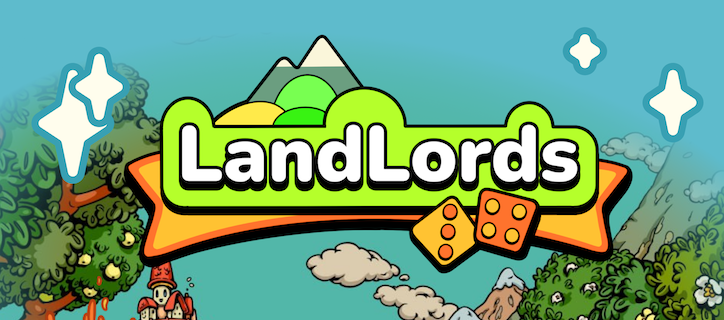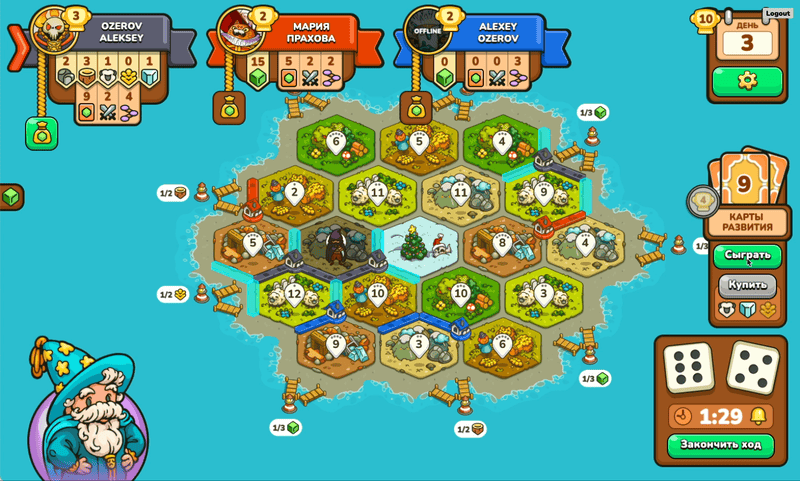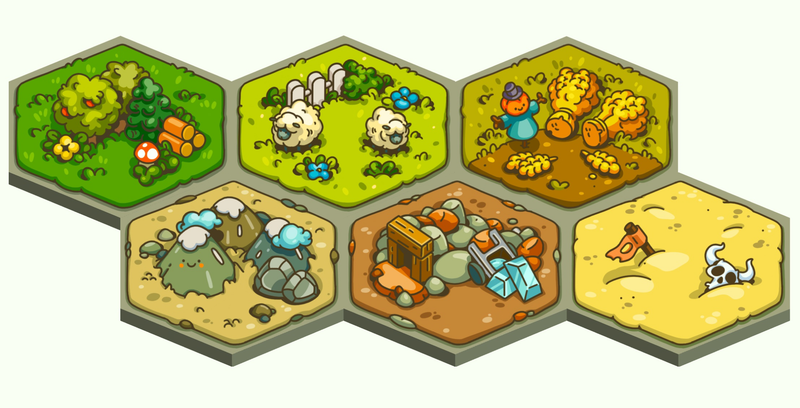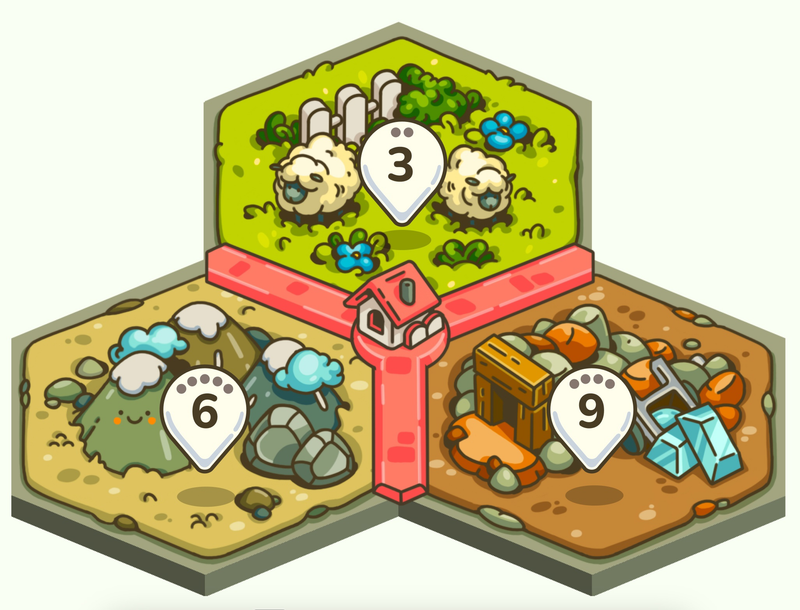LandLords. Catan board game alternative

Couple of months ago a friend of mine i13luck from tezee.art asked me to help them on their endeavour to create a new game called LandLords. It’s an alternative version of the very popular board game Catan
Catan, previously known as The Settlers of Catan or simply Settlers, is a multiplayer board game designed by Klaus Teuber. It was first published in 1995 in Germany by Franckh-Kosmos Verlag (Kosmos) as Die Siedler von Catan (pronounced [diː ˈziːdlɐ fɔn kaˈtaːn]). Players take on the roles of settlers, each attempting to build and develop holdings while trading and acquiring resources. Players gain victory points as their settlements grow and the first to reach a set number of victory points, typically 10, wins. The game and its many expansions are also published by Catan Studio, Filosofia, GP, Inc., 999 Games, Κάισσα (Káissa), and Devir. Upon its release, The Settlers of Catan became one of the first Eurogames to achieve popularity outside Europe. As of 2020, more than 32 million copies in 40 languages had been sold.
Experience at tezee.art in game development is still growing, as LandLords is their first game. Despite this, I believe they have the potential to make a small indie game dev studio in the near future if they keep the pace of development new features and new games like the LandLords. Their main goal was to launch a production version in January 2025. Spoiler: They did it! You can try it out on vk.com/landlords_the_game To expand their audience and facilitate faster matchmaking, a web version is crucial. Hopefully, this will be available within a few months for those who don’t have an account on VK.

Rules of the game
To help you understand LandLords, here’s an overview of the basics. Detailed rules can be found on Catan's official website.
Standard version of LandLords is a strategy board game for 3-4 players. The goal is to be the first player to reach 10 Victory Points by building settlements, cities, roads, and acquiring development cards.

Players place 2 settlements and 2 roads on the board before the game starts, ensuring settlements are at least 2 spaces apart. After placing settlements players start to roll the dice. Rolling the dice determines which hexes produce resources for all players based on their settlements or cities. Players with settlements or cities adjacent to the rolled hex receive resources. 7 activates the robber.

When the robber is activated, players with 8+ resource cards must discard half of them. The active player moves the robber to a hex, blocking resource production for that tile. The robber allows the player to steal 1 resource card from a player with a settlement or city adjacent to the chosen hex.
Players can trade with others or the bank. 4:1, or better if they control a harbor. Resources are used for building, buying development cards, or trading with other players.
- Road: 1 brick, 1 lumber
- Settlement: 1 brick, 1 lumber, 1 grain, 1 wool
- City: 2 grain, 3 ore
- Development Card: 1 grain, 1 ore, 1 wool
To win the game players earn Victory Points through the following actions:
- Settlements: 1 VP each
- Cities: 2 VP each
- Longest Road: 2 VPs for having the longest continuous road (5+ segments)
- Largest Army: 2 VPs for playing the most knight cards (minimum 3)
- Development Cards: Some cards grant bonus VPs
What’s next
In the next article, I’ll share insights about my contributions to the game over the past few months. The first article of the series will focus on creating balanced maps. Properly balanced maps avoid adjacent hexes with the same resources and ensure even distribution of numbers across the board. Popular numbers like 6 and 8 should not dominate specific zones, as they appear more frequently and could disrupt game balance.